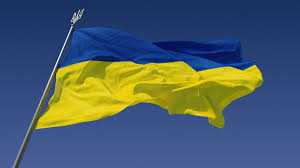The level of anti-Semitism in Ukraine is not increased

Do you see now Ukraine growth of anti-Semitism and xenophobia – to this and other questions in an interview with DW said the head of the Association of Jewish Organizations and Communities of Ukraine Iosif Zisels.
Iosif Zisels – Chairman of the Association of Jewish Organizations and Communities of Ukraine, Vice-President of the World Jewish Congress, a member of the Supervisory Board of the Ukrainian Helsinki Human Rights Union, the head of the Congress of National Communities of Ukraine, which unites 15 national groups. In an interview with DW Zissels she told whether there is in Ukraine, the rise of xenophobia and anti-Semitism, and also responded to a number of other issues.
DW: In Russia, many say that with the advent of the current Ukrainian politicians in the country have intensified anti-Semitic sentiments. Is it so?
Iosif Zisels: I was one of the leaders of the Jewish community can assure that there is no – not only sharp, but generally no increase in the number of anti-Semitic incidents in the Ukraine. We are very carefully and attentively fix every incident, every speech, every case of an attack, and every act of vandalism. And this level – as last year. Despite the tumultuous events that took place on the Maidan in Kiev, on the military operations in the south-east of Ukraine, the level of anti-Semitism in the country increases. It was and remains one of the lowest in Eastern Europe.
– And what is the level of anti-Semitism in Russia?
– As regards the level of anti-Semitism in Russia – it is too short. Just as in Ukraine, he measured a dozen or two dozen cases per year. But Russia – authoritarian country with underdeveloped democratic institutions. And in this authoritarian model of existence can be played “Jewish card”. In Ukraine, too, is to be feared that the state wants to use it, but fortunately, there is control belongs to the civil society.
– What can you say about the allegations in the city address that the current government allegedly tolerate manifestations of neo-Nazism?
– First of all, it is a question of terminology. I think really understand what Nazism, only to narrow specialists. They are our experts, with whom we have worked for many years. In Ukraine, as in any other country, there are right-wing movements, some of which resemble the neo-Nazi. But they are in Europe. Right-wing parties have almost all European countries, and they are much more dangerous than what we see today in Ukraine.
So, the party “Freedom” is not passed to the new Ukrainian parliament, which was in the previous Parliament when Yanukovych was there 37 mandates. This demonstrates the falling level of interest in the radical demagogy of this order. Lyashko passed Radical Party, which is very different: it is less than the national radical demagogy, but more general radical demagoguery. In majority districts it took a few people who can be considered right-wing radicals with aspects of neo-Nazism. Very few of them: 423 MP – about 10. That is less than it was in the last Parliament, where there were 37.
But I think that the concerns of the Parliament, there was a general shift of the entire spectrum a little to the right. Because such a national-democratic parties as Block Petro Poroshenko, “Popular Front” and “self-help” – are themselves center-right. That is, the parliament’s center of gravity has shifted slightly to the right, and is a tribute to wartime. Requirements radicals is not particularly noticeable.
– The fact that the Parliament did not pass the “Freedom” and “Right Sector”, can be considered a success of Ukrainian democracy?
– In fact, these parties were radical demagogic. Moreover, these were the projects financed and designed to split the opposition with Yanukovych’s government. That is, in part, they were man-made projects. They can not be considered as such natural, organic manifestations of the right of the spectrum, as can be seen in many countries.
In Ukraine, the main control of the right-wing radicals has not the government, as is the case in Russia, and civil society. It itself copes with this low level of pravoradikalizma in the country, making it much better than the state. And it is – a guarantee that this rate will not be great.
– Earlier you said that “right-wing and neo-Nazi forces” involved in the conflict in the Donbass, from both sides? You can name specific examples?
– On the Russian side, according to our experts, fights about 200 neo-Nazis. Among them are, first of all, “Russian National Unity”. This is a known neo-Nazi organization in Russia, which has its own recruitment offices, training camps for militants and separate connections on the front. Others – such as, for example, the former party Limonov, is “dyed” in other colors. It is important to note also that the present or volunteers or mercenaries from European right-wing neo-Nazi parties. They, too, are fighting on the Russian side.
On the Ukrainian side, too, there is a man 30-40 – skinheads from the right-wing group “Social-National Assembly”, “Patriots of Ukraine”, for which we are following closely. In this regard, first of all, we may note the battalion “Azov”, where there may be even a few dozen people from the “Social-National Assembly.” Andrey Beletsky – the commander of the battalion (now it is a regiment) – the head of “Social-National Assembly.” However, he argues that the war changed their ideology.
– From what sources do you get information?
– We have a number of experts of the European level. We use their data, and trust them, as for many years working with them. Moreover, our data are taken from the report of the State Department’s anti-Semitism in the world and the OSCE report on the monitoring and analysis of anti-Semitism in the world. I myself 25 years engaged in the construction of networks for monitoring and analysis of xenophobia and anti-Semitism.
Sourse, 06/11/2014

